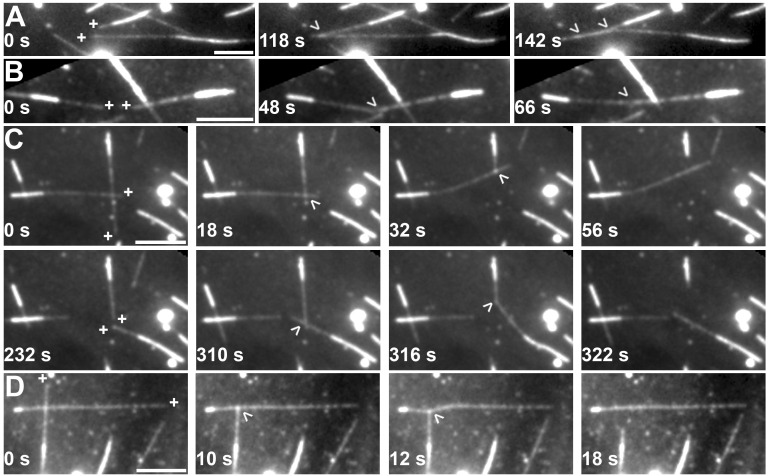Figure 2.
HIS-TAN1 contact angle–independent dynamic microtubule interactions. (A–D) Dynamic rhodamine-labeled microtubules nucleated from GMPCPP-stabilized seeds with plus ends indicated by a (+) and a crossover indicated by arrowheads. Microtubule seeds are identified by their brighter signal compared with the growing microtubule ends. 2 µM HIS-TAN1 is present in the assay. (A) Two microtubule plus ends are indicated with their plus ends polymerizing in the same direction. These microtubules encounter each other in a parallel orientation and are zippered together. (B) Two microtubule plus ends are indicated with their plus ends growing toward each other. These microtubules are zippered together in an antiparallel orientation. (C) Two microtubule plus ends are indicated at the start (0 s). These microtubules crossover, and at 18 s, one of them depolymerizes. The depolymerizing end of this microtubule appears to pull on the other microtubule over the course of depolymerization. At 232 s (new plus-end growth indicated), a new crossover is formed, followed by a depolymerization event, which again pulls at the crossover with the nondepolymerizing microtubule (316 s). Time lapse is shown in Video 1. (D) Two microtubule plus ends are indicated at the start (0 s), which cross over at a high angle (∼90°). Depolymerization of one microtubule leads to transient deformation of the other microtubule at the crossover point. Scale bars, 10 µm.

